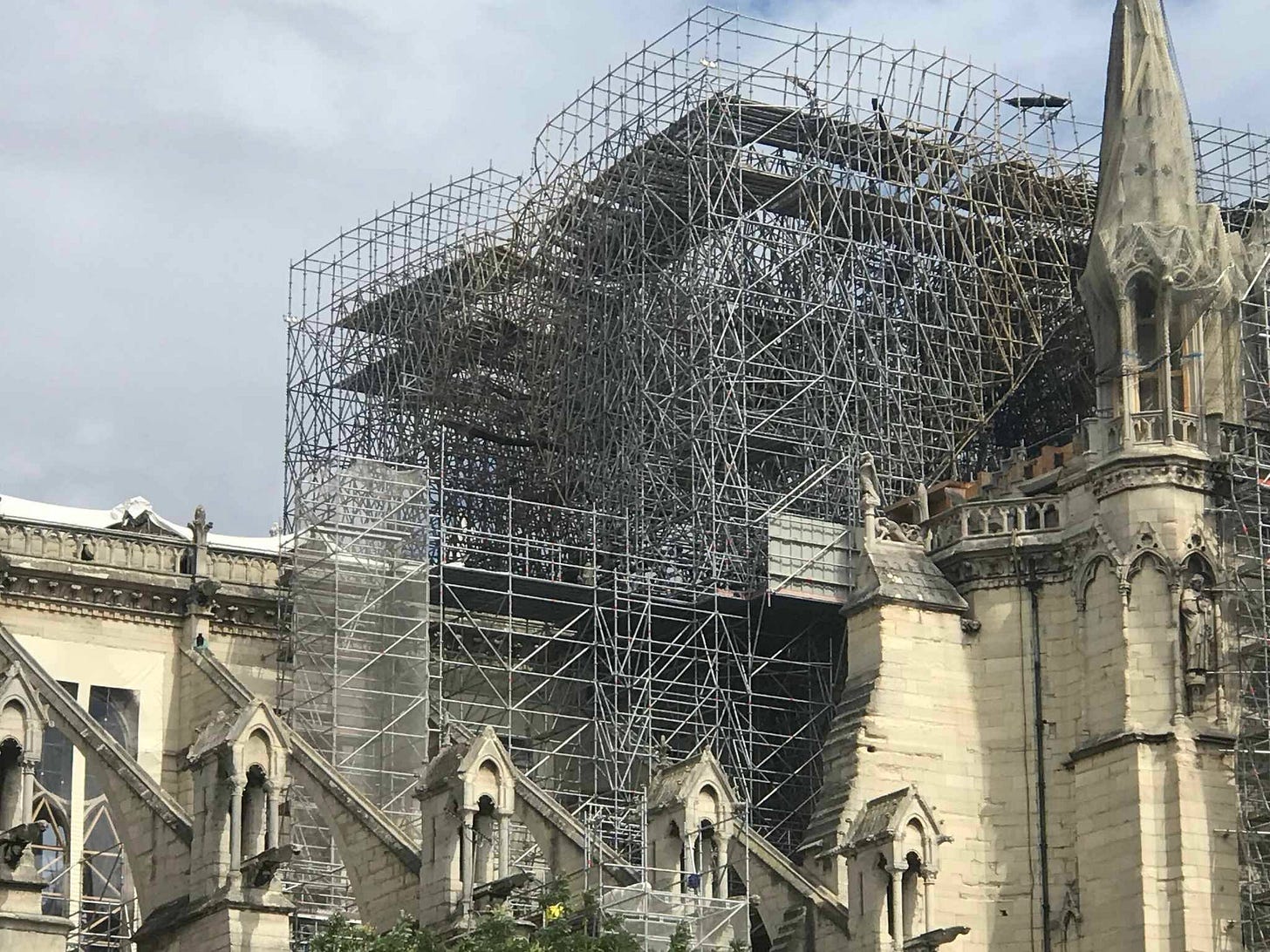
“Notre Dame on fire”, said the message on my phone. Sitting at the dinner table at a friend’s house in northern Italy, I hid my tears as the live video unfolded before my eyes. Soon the spire came crashing down through the cathedral’s roof. It was April 15, 2019.
The tragedy was plastered on the front page of newspapers around the world the next day. And to make it even worse, no one knew why it had caught fire. Sylvia Whitman, of Shakespeare and Company bookstore said, “It felt impossible; it felt like walking outside and finding the moon split in two.” (from Shakespeare and Company’s Introduction to The Hunchback of Notre Dame.)
Soon President Macron promised that France would rebuild the eight-century-old cathedral within five years. Donations from around the world came pouring in, even as people openly laughed at Macron’s overly ambitious time frame. And there were fears that Notre Dame might even collapse entirely before reconstruction could begin. With part of the support structure missing, there was a valid concern that a strong wind could send the front of the cathedral tumbling down. The Covid-19 pandemic further complicated everything. Macron brought in retired General Jean-Louis Georgelin to manage the project. Georgelin, a determined leader, was quoted as saying. “I will relax only when this will be done.”
Notre Dame was being refurbished when the fire occurred, melting tons of scaffolding over the center of the roof. Any errors in removing this twisted metal could also have finished off the cathedral. And then there was the lead dust. As I mention in my upcoming book, Paris for Life, when the fire hit the roof, molten lead came down like a scene from Victor Hugo’s The Hunchback of Notre Dame. The lead dust added to the difficulty of the cleanup and restoration efforts. Four years later, workers are still fitted with hazmat clothing complete with eye protection and air purifying masks to reduce the potential for lead poisoning. But these suits slow down their work.
Rebuilding the roof and the spire has also been a painstakingly slow process. Artisans are using original techniques and manual tools to emulate as much as possible the work done centuries ago when the wooden roof and spire were built. Over a thousand oak trees from French forests were used to rebuild the spire. Experts searched the underground caverns of Paris to closely match the characteristics of the stones damaged in the fire.
Even with the challenges inherent in the rebuilding process, the project is still on schedule to be completed by the end of 2024, when Christmas mass is expected to be held inside.
The base of the spire has already been delivered to Paris and will be put in place this summer (2023). Over the remainder of the year, we can expect to see the rest of the spire being put in place, giving a visible sign of hope throughout Paris. If things continue as planned, the second half of 2024 should see cleanup work, followed by the replacement of paintings, the organ, and religious artifacts into the cathedral.
For the most recent updates on Notre Dame and to see a recent 13 minute video by 60 Minutes on reconstruction progress as explained by Jean-Louis Georgelin, click here.
https://www.friendsofnotredamedeparis.org/reconstruction-progress/
BREAKING NEWS: On August 19, 2023, Jean-Louis Georgelin, the mastermind of the reconstruction efforts, has died while on vacation. For more info, Click Here





